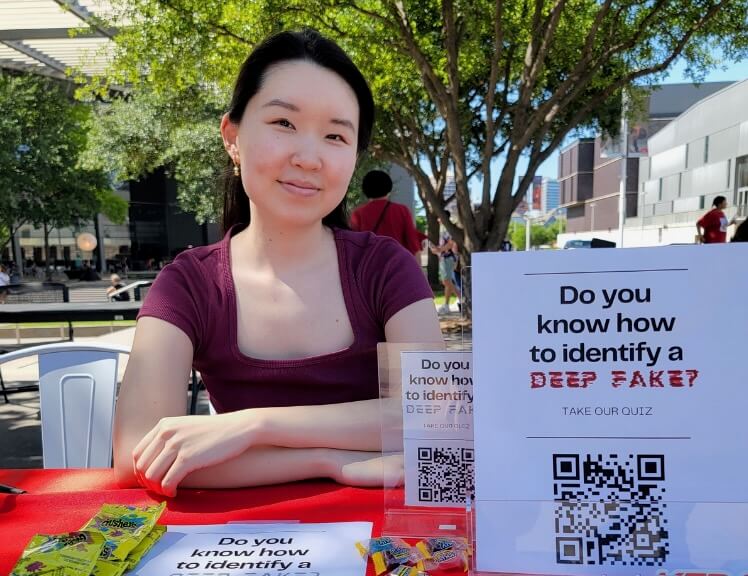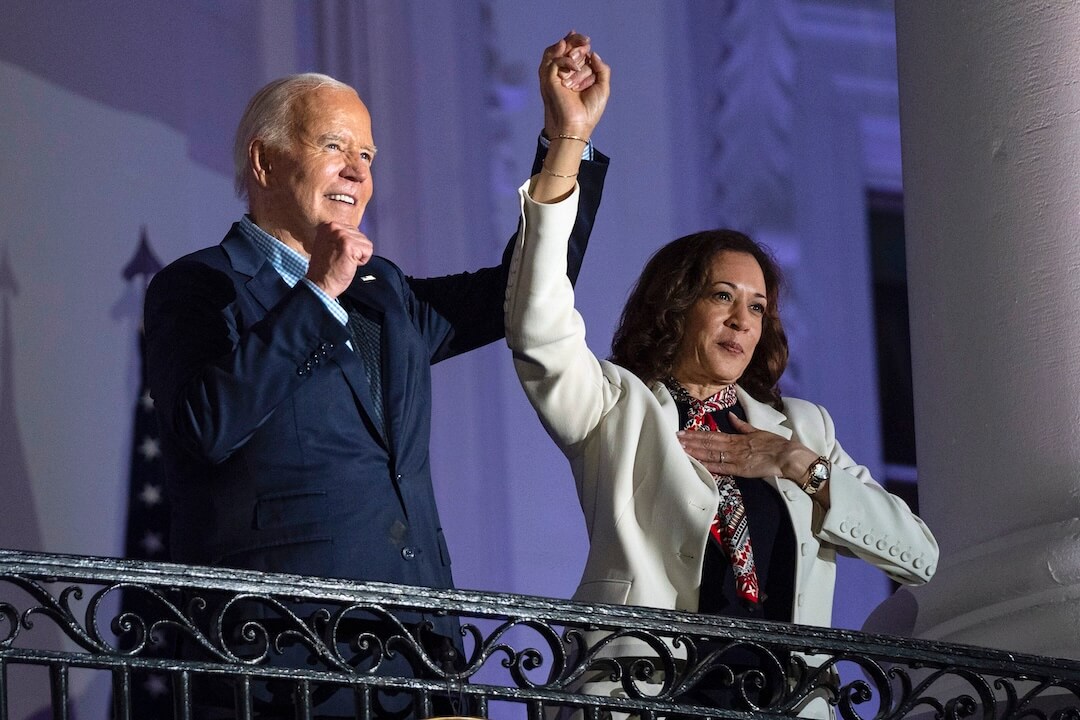Here’s the third dispatch from our summer series sharing how-tos, tips, projects and guides from the 2023-2024 Poynter-Koch Media and Journalism Fellows. This week, we’re featuring Elizabeth Myong, an Arts Acces reporter for KERA and the Dallas Morning News. Her project, which took on media literacy and deep fakes, won the program’s third-place prize.
Kristen Hare: To start with, tell us about your project overall and what you were hoping to build with it.
Elizabeth Myong: For my project, I tabled at community engagement events my team was already planning and used games and trivia as a way to start conversations with people about deepfakes, misinformation and sensationalism.
I’ve always been passionate about the need for media literacy and make an effort to educate my sources while reporting. But there are these larger, pressing topics that don’t get discussed in a meaningful way in our communities. As a local journalist, it’s painful to see all the research about declining trust in and understanding of the media and just stand on the sidelines. So this was my effort to start a dialogue and hopefully provide some more (fun) education.
While people can Google these topics, the reality is that most people don’t — they’re busy and news fatigued and have lives to live. So I thought, what better way to make people engage than being right in front of them and presenting the information as fun games?
Hare: What steps did you take?
Myong: I started out by gathering input from fellow reporters, editors, friends, family and the community, including members of the Dallas Asian American Art Club. Then, I did a trial run tabling at Dallas’ Arts Month Block Party and then launched a more built-out version of my project at a funding fair my team hosted.
Hare: How did it go?
Myong: I was really nervous the first time I did my beta test — I thought no one would talk to me. But I was pleasantly surprised that people were pretty eager to engage. Putting out snacks certainly helped, but people were actually very interested in the subject of deepfakes and the idea of testing their knowledge. Elementary-aged children, high schoolers, seniors and millennials participated. They ranged from people who asked what a deepfake is to a high schooler who was very familiar with the subject and immediately wanted to take the quiz.
One of my favorite interactions was talking with a young boy who was drawn to one of our iPads showing a deepfake of Keanu Reeves dancing. I asked him if he thought it was the real Keanu and it started a conversation where I explained what a deepfake is to him and his dad. It’s a small win, but I was like, “Hey, that’s a future voter!”
The second time I went out, it felt even more successful because I made adjustments to my project and expanded it. Instead of just having the deepfake quiz, I also added a trivia game about misinformation and a headline game about sensationalism. So when that event concluded, I felt proud that people walked away with more tools in their belt and we covered a wider range of topics. Also, I started writing down comments people were making and it was so heartening they wanted to have a meaningful dialogue about these issues. (From one participant: “This is a really big problem. [People] just take everything as fact and they share it so it becomes real or true.”)
We also asked each participant to include some contact information and we have their Google form responses, so I think that data could be really valuable to understand where people are at and it also gives us the opportunity to reach back out.
Hare: What did you learn?
Myong: I learned so much from my first time going out. First of all, I made the quiz way too difficult so I could see some people were walking away a little defeated or disappointed. I definitely didn’t want that to be their takeaway. So the next time around, I made the quiz a little more accessible and also folded in some more visual elements. People wanted to see an actual deepfake and try to identify it, so I made sure to add that later on.
My bigger takeaway was that progress doesn’t get made by overthinking. I was so overly concerned about reaching a mass of people; if I didn’t reach hundreds or thousands of people, I was worried my project wouldn’t be impactful. But just trying things showed me the real value of my project is in the depth of my interactions and being able to have real-time dialogue with people. At the end of the day, even if each person just learned one thing and felt like I cared — that’s a win to me.
The other takeaway I had was the value of getting newsroom buy-in by being innovative with what we’re already doing. Most of our newsrooms are trying to do more with less. I initially pitched my own event but the response made it clear that it would be difficult to get full buy-in. So instead of trying to create a completely new thing, I looked for ways to leverage our existing work. The events I finally tabled at were already on our calendars and in the planning stages, so joining in seemed like the best option. Not only did it make it an easier lift for me, I think it gave the message to our audience that media literacy is a part of the work we’re doing, not just a one-off event.
Hare: What steps should other newsrooms take to incorporate media literacy into community events?
Myong: I would say be sure to touch base with your community and get a sense of what they’re looking for. Don’t just rely on what you think would be best. Asking community members, family, friends, other reporters and editors was a critical part of this project.
Also, be open to experimentation and testing things out because media literacy can be fun! In fact, I think it should be fun otherwise people don’t want to engage. Yes, it’s a serious subject that has high stakes but I think the smartest strategy is making it easy for people to enter into a conversation.
Hare: What resources can you point people to?
Myong: I definitely turned to the social content created by Poynter’s MediaWise, not just for the information but the way they deliver it. Because the content is already short-form and easily digestible, it helped me think through the most approachable ways to share certain concepts. It also gave me peace of mind because a lot of the advice for how to spot deepfakes, for example, is constantly changing. I could look back at the guidance they gave a year or two ago and see how their content has changed as technology advances.
I also pulled from media literacy content on PBS and PBS NewsHour Classroom, which is great because they have worksheets and lesson plans on how to talk to children and teens about topics like misinformation.
A version of this story originally ran in Local Edition, our newsletter for and about local news.





